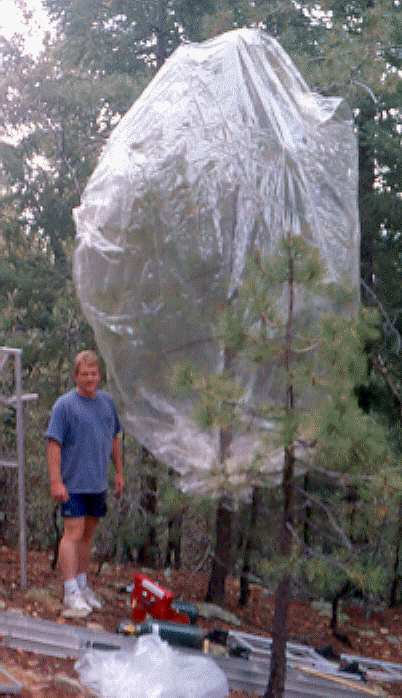|
 William
Edward Wright William
Edward Wright
Ph.D 2001
Contact Information:
Dr. William Edward Wright
Researcher
Lab. of Tree-Ring Research
University of Arizona
Tucson, AZ 85745
E-mail: wew@email.arizona.edu
Web: https://ltrr.arizona.edu/node/4591
Dissertation Title: dD and d18O
in Mixed Conifer Systems in the U.S. Southwest: The Potential of d18O
in Pinus ponderosa Tree Rings as a
Natural Environmental Recorder (see Abstract below)
|
|
|
dD and
d18O in Mixed Conifer Systems
in the U.S.
Southwest: The Potential of d18O in Pinus
ponderosa
Tree Rings as a Natural Environmental Recorder
Department of Geosciences
The University of Arizona
2001
Abstract
The North American Monsoon provides half of the annual precipitation in Tucson, Arizona.
The other half occurs dominantly during the winter and early spring. Late
spring is the transitional period to the monsoon and is characterized by high
temperatures and low humidity. The reliability of this hyperarid
period, the consistency of the timing of monsoon onset, and the recognition
that certain high-elevation trees produce annual false latewood bands in
response to this transitional period, were critical to the design of this
dissertation research. I hypothesized that subannual
environmental signals might be fixed in stable oxygen isotopes in cellulose
from such trees.
Existence of a long-term dataset of D and 18O from Tucson precipitation provided impetus for the collection
of a companion dataset at a high-elevation site in the Santa
Catalina Mountains
north of Tucson.
Trees were sampled near the precipitation collection site. The relations
between the stable isotope ratios in the precipitation and in the tree
cellulose were identified through extraction of water from bimonthly samples
of nearby soil, tree stems and needles. Spatial consistency of the cellulose
stable isotope signals was measured using tree samples from seven additional
sites across the U.S.
desert Southwest.
Correlations between Tucson summer
precipitation 18O and both local and extra-regional environmental
parameters resulted in the identification of the dominant monsoonal moisture
source for the Tucson
area. Similar correlations with the cellulose 18O timeseries from the post-false latewood cellulose,
supported the previous interpretations, and suggest long-term reconstructions
may be possible. Correlations between the earliest cellulose 18O
division and extra-regional environmental parameters suggest environmental
measures may be reconstructable for the cool
season. Comparison of the high and low elevation precipitation D and 18O
datasets yielded many baseline measures of precipitation stable-isotope
dynamics in the U.S.
desert Southwest. Comparison of the high-elevation precipitation stable
isotope record with soil and stem water D and 18O from nearby
confirmed that local trees were using dominantly deeper soil water. I noted
correlations between measured needle-water stable isotope values and values
calculated using a leaf-water model, but systematic departures suggest an
additional unmodeled process may operate in this
system.
|